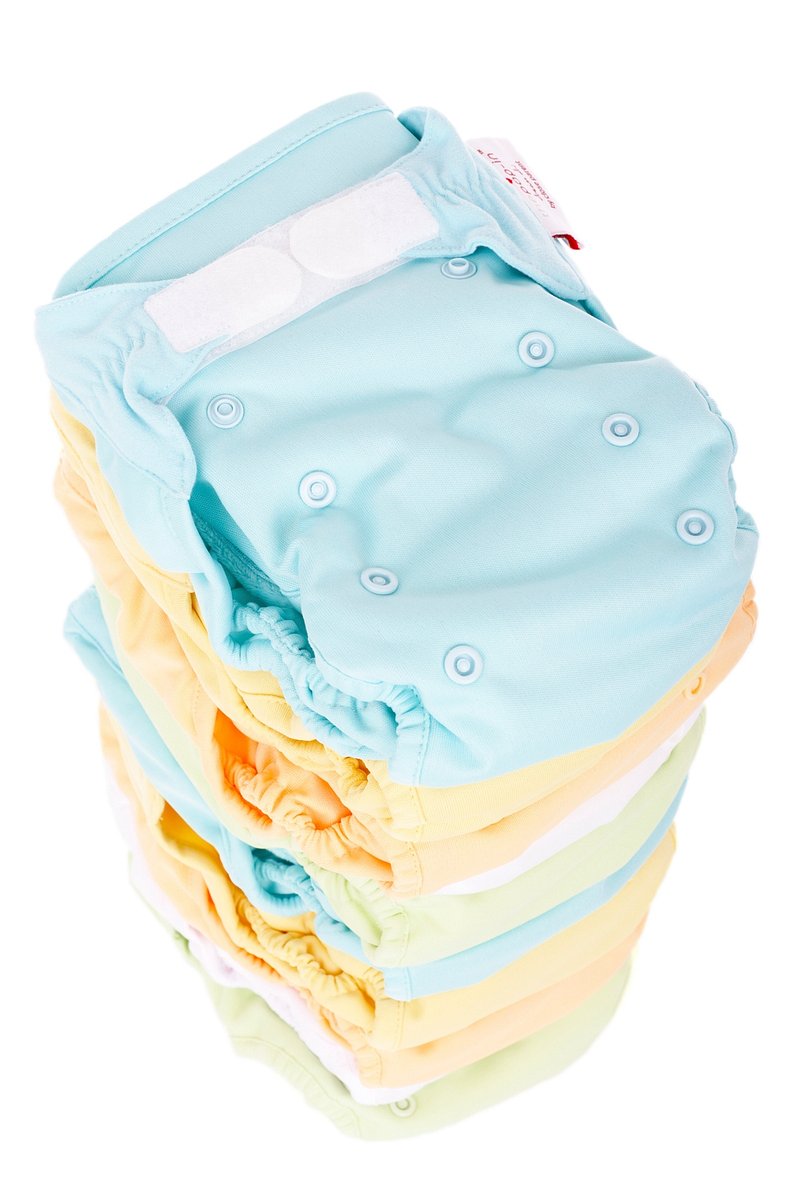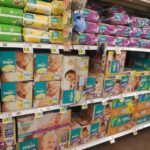The Great Diaper Debate: Are Natural Diapers Really Better for Your Baby?
“Cloth Diaper Images | Free Photos, PNG …” from www.rawpixel.com and used with no modifications.
When it comes to our little ones, every choice we make as parents feels monumental. The diaper decision is no different – it’s a choice you’ll make every day, multiple times a day, for the first few years of your baby’s life. So, it’s natural to wonder: are natural diapers really the best option for your baby? Let’s dive into this debate with the care and attention it deserves.
Deciphering the Diaper Debate: A Comparative Look at Baby’s Best Options
It’s not just a matter of cloth versus disposable anymore. The diaper market has expanded to include a variety of options that cater to different priorities, from eco-friendliness to budget concerns. But as we sift through the claims and the hype, it’s crucial to focus on what matters most: your baby’s health and comfort, and the impact on our planet.
Key Takeaways: Quick Guide to Diaper Choices
Before we get into the nitty-gritty, here’s a snapshot of what you need to know about natural diapers:
-
Natural diapers are often made from organic materials that are gentler on your baby’s skin.
-
They tend to be free from chemicals and fragrances that can cause irritation and diaper rash.
-
Eco-conscious parents appreciate that natural diapers are more biodegradable than their conventional counterparts.
-
While the upfront cost may be higher, natural diapers can lead to savings in the long run, especially if you opt for cloth over disposables.
-
Choosing natural diapers aligns with a sustainable lifestyle, reducing your family’s carbon footprint.
Now, let’s explore why these points matter and how they can guide you to make the best diapering decision for your family.
Understanding the Diaper Dilemma: Natural vs. Conventional
The diaper aisle can be overwhelming with its array of choices. Conventional disposables promise convenience, while cloth diapers boast eco-credentials. But there’s a growing segment of the market that combines the best of both worlds: natural diapers.
These products are designed with your baby’s health and the environment in mind. They’re typically made from renewable materials like bamboo or organic cotton, and they’re processed without the harsh chemicals found in many traditional disposables. This means less risk of diaper rash and allergic reactions for your baby’s sensitive skin.
Natural Diapers Unwrapped: The True Benefits for Your Baby
When you hold your baby, you’re aware of how delicate and sensitive their skin is. Natural diapers honor this tenderness with materials that are not only soft but also free from potential irritants.
Here’s what sets natural diapers apart:
-
They’re often made from organic cotton or bamboo, which are both renewable resources.
-
Natural diapers are less likely to contain chlorine, dyes, or fragrances that can cause skin irritation.
-
The breathable nature of the materials helps prevent diaper rash by keeping moisture away from the skin.
But beyond the touchy-feely aspects, natural diapers also have a serious side when it comes to your baby’s health.
Eco-Friendly Materials and Baby’s Health
It’s not just about the feel of the fabric. The materials used in natural diapers are chosen for their minimal impact on the environment, which in turn reflects a commitment to your baby’s future on this planet.
Consider this: conventional diapers often contain plastics derived from petroleum, a non-renewable resource. By choosing natural diapers, you’re opting out of this cycle and reducing your family’s dependence on fossil fuels.
Chemical-Free Construction: Analyzing Skin Sensitivity and Diaper Rash
One of the biggest concerns for any parent is diaper rash. It’s uncomfortable for your baby and can be distressing for you to see. Natural diapers address this head-on by eliminating many of the chemicals that can lead to skin irritation.
Here’s what you won’t find in most natural diapers:
-
Chlorine, which is used to bleach conventional diapers and can leave behind dioxins, known carcinogens.
-
Artificial fragrances, which can cause allergic reactions and skin irritation.
-
Latex, which is a common allergen and can be found in some disposable diapers.
By steering clear of these substances, natural diapers help to keep your baby’s skin clear, healthy, and rash-free.
Long-Term Health Implications: A Pediatric Perspective
While the immediate comfort of your baby is paramount, it’s also essential to consider the long-term health implications of your diaper choice. Pediatricians are increasingly aware of the potential health risks associated with prolonged exposure to chemicals in conventional diapers.
Choosing natural diapers is a proactive step towards minimizing these risks and ensuring that your baby has the healthiest start possible.
As a parent, you’re not just thinking about today’s diaper change; you’re considering your child’s future. Pediatricians often remind us that the early years of a child’s life are critical for development. Natural diapers, free from harsh chemicals, provide a safer environment for your baby’s growth and development. It’s a small step that can have a big impact on their long-term health.
Examining the Environmental Impact of Diapering
Every diaper choice you make has an environmental consequence. It’s not just about the immediate cleanliness of your baby but also about the world they will grow up in. Let’s take a closer look at how different diapers stack up against each other in environmental terms.
Biodegradability Battle: Disposables Versus Cloth
When it comes to biodegradability, natural diapers have a clear advantage. Most are designed to break down more quickly than conventional disposables, which can take hundreds of years to decompose. Cloth diapers, on the other hand, can be used repeatedly, reducing waste altogether. However, the environmental impact of laundering cloth diapers must also be considered.
Carbon Footprint Calculation for Different Diaper Types
Calculating the carbon footprint of your diaper choice involves looking at the entire lifecycle of the diaper. From the energy used in production to the emissions from transportation, every aspect contributes to the overall carbon footprint. Natural diapers often have a smaller carbon footprint due to sustainable sourcing and production practices.
Waste Management: The Landfill Lowdown
Landfills are filling up fast, and disposable diapers are a significant contributor. A staggering number of diapers end up in landfills each year, where they sit for generations. By choosing biodegradable natural diapers or reusable cloth options, you’re helping to reduce this burden on our waste management systems.
Cost Analysis: Saving Dollars and Making Sense
Let’s talk money because, let’s face it, raising a child isn’t cheap. The cost of diapering can add up, but it’s not just about the price tag on the package. You need to consider the cost per change, the number of diapers you’ll use, and the long-term expenses associated with each option.
Natural diapers may seem more expensive at first glance, but when you factor in the reduced risk of diaper rash (which means fewer creams and potential doctor visits), the cost can balance out. Additionally, if you choose cloth diapers, the initial investment pays off over time as you reuse them, potentially saving you hundreds of dollars.
Price Comparison: Upfront Costs vs. Long-Term Savings
When weighing the options, the upfront cost of natural diapers, particularly cloth diapers, can be daunting. A full set of cloth diapers can run into the hundreds of dollars. However, this is a one-time investment. Disposable diapers, while cheaper per pack, will be bought week after week, adding up to a significant amount over time. To put it into perspective, you could be spending upwards of a thousand dollars per year on disposables.
 The Economical Choice? A Parent’s Cost-Benefit Analysis
The Economical Choice? A Parent’s Cost-Benefit Analysis
When making a cost-benefit analysis, think long-term. If you plan to have more children, those cloth diapers can be reused, multiplying your savings. Plus, there’s the potential resale value of cloth diapers, which is not an option with disposables. On the flip side, you have to factor in the costs of water, electricity, and detergent for washing cloth diapers. Even so, parents who choose cloth often find the overall cost significantly lower than disposables in the long run.
Cloth Diapers: A Sustainable Alternative?
Cloth diapers have come a long way from the safety pins and rubber pants of the past. Today’s cloth diapers are user-friendly, with snaps or Velcro, and come in a variety of cute designs. But beyond aesthetics, they’re a sustainable choice. They can be used for multiple children and are made from natural fibers that are gentle on the environment.
Myths vs. Facts: Debunking Cloth Diaper Misconceptions
There are plenty of myths surrounding cloth diapers that can deter parents from considering them. Some believe they’re more prone to leaking or that they’re labor-intensive. The truth is modern cloth diapers are designed to be as leak-proof as disposables, and with a routine in place, washing them is no more difficult than any other laundry.
Washing Wars: Impact of Laundry Practices on Sustainability
Yes, cloth diapers need to be washed, and that does have an environmental impact. However, by using energy-efficient washing machines, eco-friendly detergents, and line drying when possible, you can minimize this impact. Plus, you’re avoiding the environmental cost of manufacturing and disposing of thousands of disposable diapers.
High-Tech Hybrids: Innovation in Cloth Diapering
For those who want the best of both worlds, there are now hybrid diapers. These feature a reusable outer shell and a disposable, often biodegradable, insert. They’re perfect for parents who are on the go but still want to reduce their environmental footprint. Innovations like these are making it easier than ever to choose an option that’s convenient, cost-effective, and kind to the planet.
Real Parents, Real Stories: Community Insights on Diaper Choices
Nothing speaks louder than the experiences of parents who’ve walked the diapering path before us. Their stories shed light on the realities of each diapering option and can provide invaluable insights as you make your own decision.
Case Studies: Personal Experiences with Natural Diapering
Take Sarah, a mother of two, who switched to cloth diapers after her first child experienced severe diaper rash with disposables. She found that not only did the rashes disappear, but her family also saved money and reduced their trash output significantly. Then there’s Michael, a dad who chose a hybrid diapering system for the convenience of disposables when out and the cost savings of cloth at home. These stories illustrate the flexibility and benefits that natural diapering options can offer.
Surveys and Stats: What Do The Numbers Say?
When we look at the numbers, the trend is clear. A survey conducted by a leading parenting magazine found that among parents who chose cloth or natural diapers, over 80% reported fewer instances of diaper rash. Additionally, 70% felt that their choice was better for the environment, and almost half believed they saved money in the long run compared to using disposables exclusively.
Final Considerations: Tailoring Diaper Decisions to Your Lifestyle
Your family’s lifestyle, values, and budget play a significant role in the diapering decision. Whether you’re juggling work and parenting, committed to a green lifestyle, or keeping a close eye on expenses, there’s a natural diapering option that can align with your needs.
Aligning Diaper Choice with Parental Values and Concerns
If environmental responsibility is a top priority for you, cloth diapers or biodegradable disposables might be the way to go. For those who value convenience but still want to make a positive choice for the planet, hybrid diapers could be the perfect fit. And if budget is your main concern, investing in cloth diapers that can be used for future children may provide the most significant savings.
Concluding Thoughts: Making the Best Choice for Your Baby
At the end of the day, the best diaper is the one that works for your baby and your family. Natural diapers offer a host of benefits, from skin health to environmental impact, but they’re just one part of the larger parenting journey. Consider your options, weigh the pros and cons, and remember that your choice is a personal one. No matter what you decide, you’re doing great, and your baby will thrive with your love and care.
Frequently Asked Questions (FAQ)
Why are natural diapers considered better for a baby’s skin?
Natural diapers are typically made from organic materials that are softer and more breathable than the synthetic fabrics used in many conventional diapers. This means they allow better air circulation around your baby’s skin, which can help to prevent the damp conditions that lead to diaper rash. Moreover, they’re free from chemicals like chlorine, fragrances, and dyes, which are often found in regular disposables and can cause irritation and allergic reactions. In essence, natural diapers provide a cleaner, less irritating environment for your baby’s delicate skin.
Are natural diapers more cost-effective in the long run?
While the initial cost of natural diapers, particularly cloth options, can be higher than conventional disposables, they can indeed be more cost-effective over time. For one, cloth diapers can be used for multiple children, which spreads the cost over several years and reduces the need to purchase new diapers. Also, since natural diapers are gentler on the skin, you may save on additional healthcare and skincare products for diaper-related issues. Lastly, considering the environmental cost of disposables, choosing natural diapers can be seen as an investment in a healthier planet, which is a priceless benefit for your child’s future.




